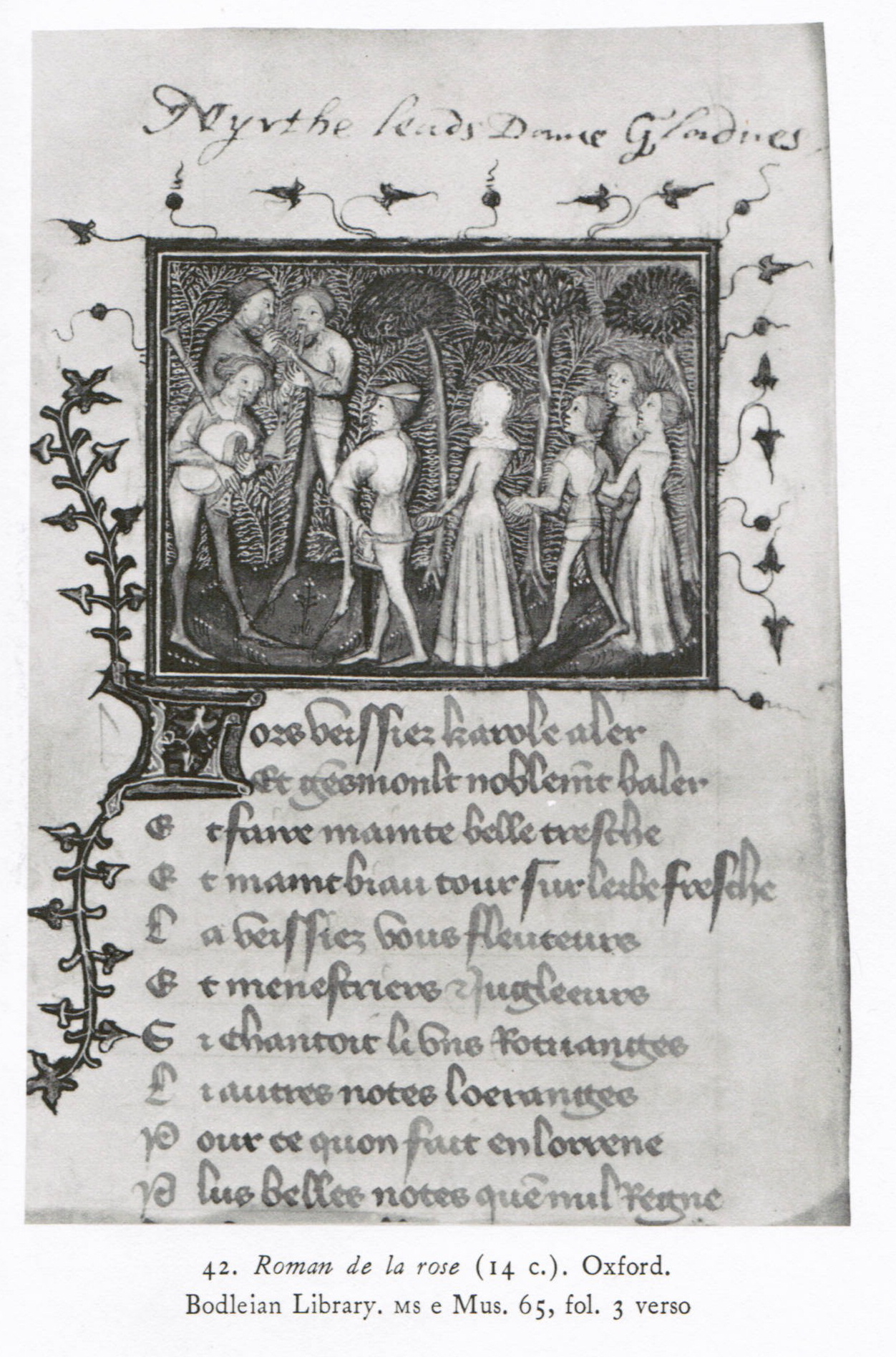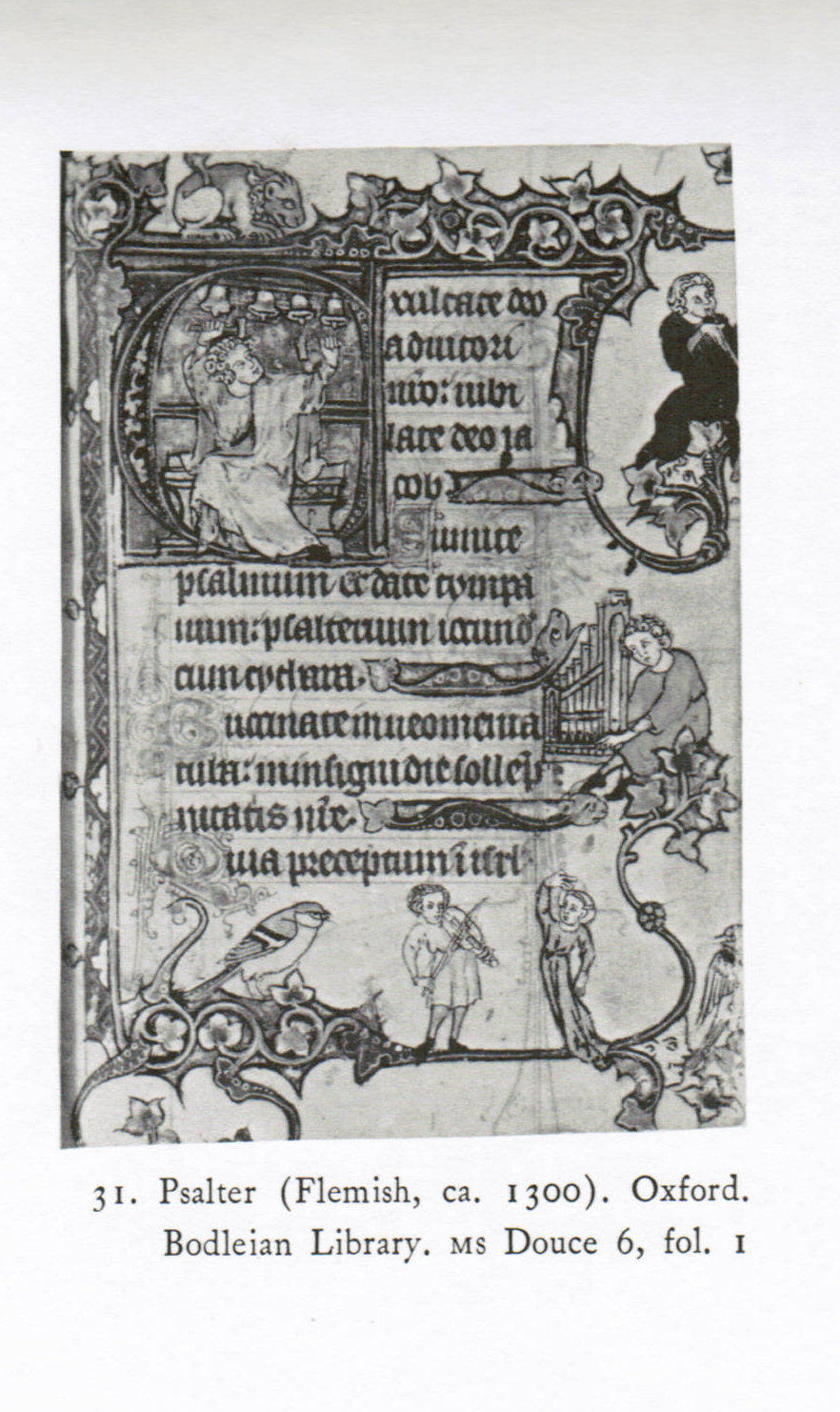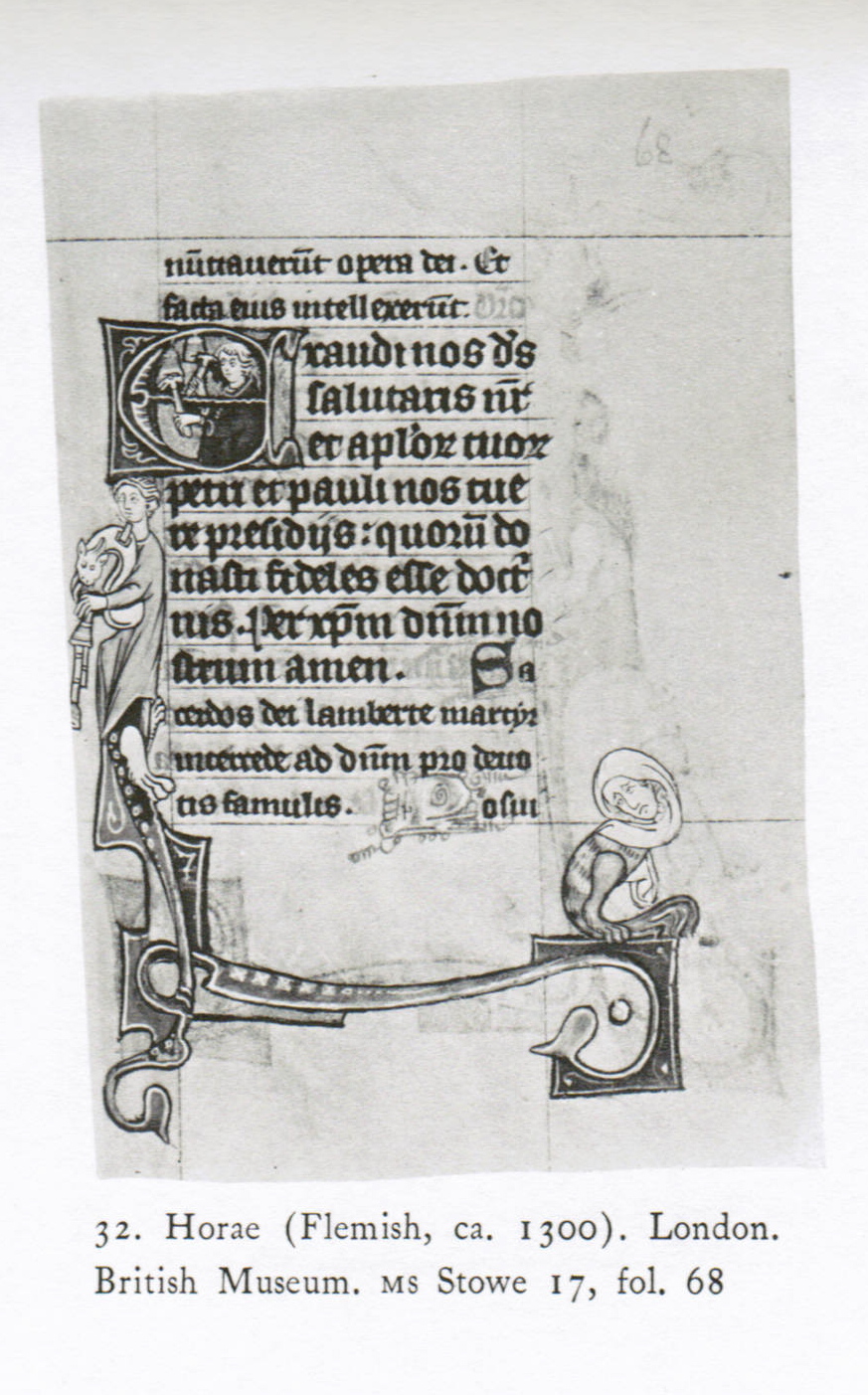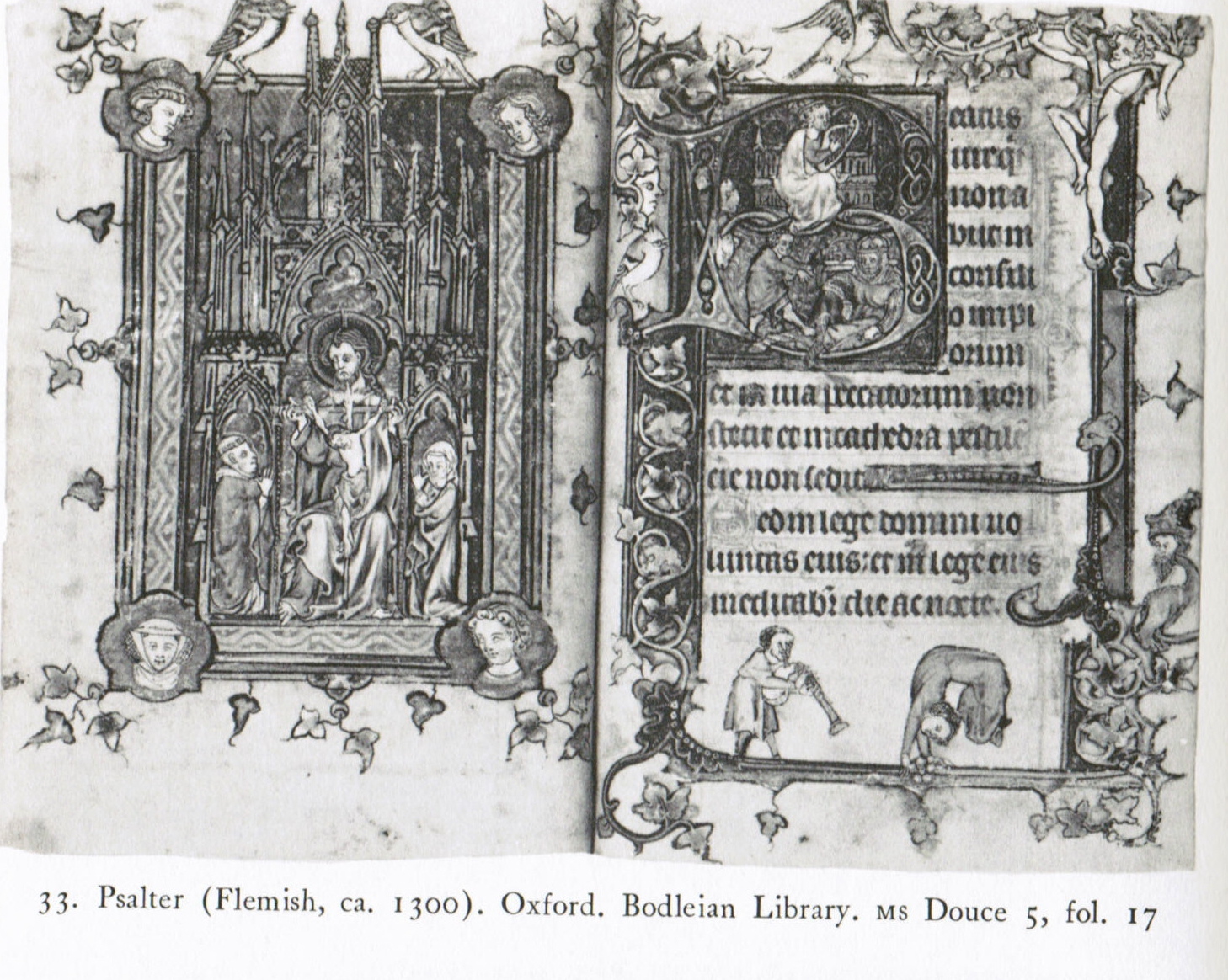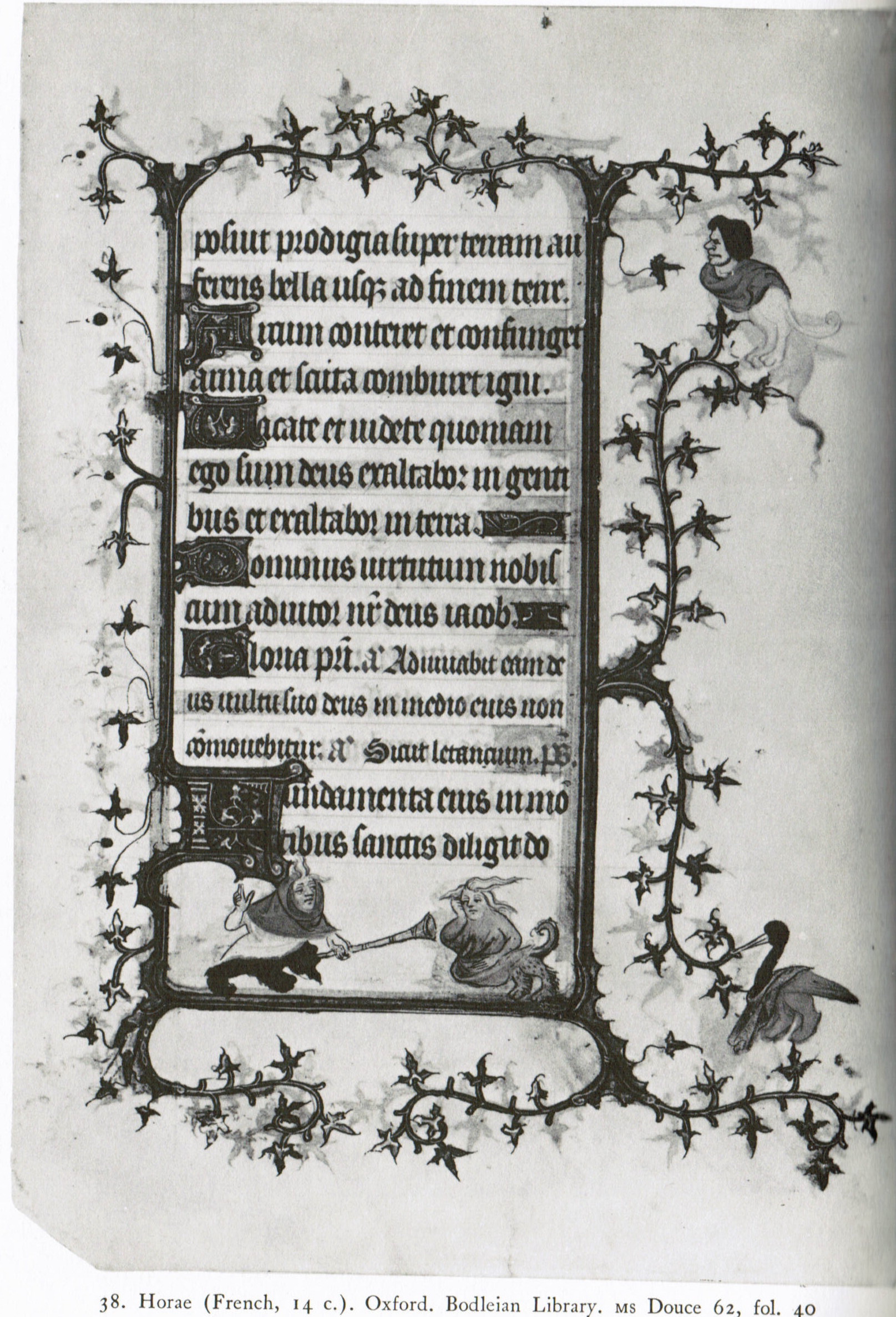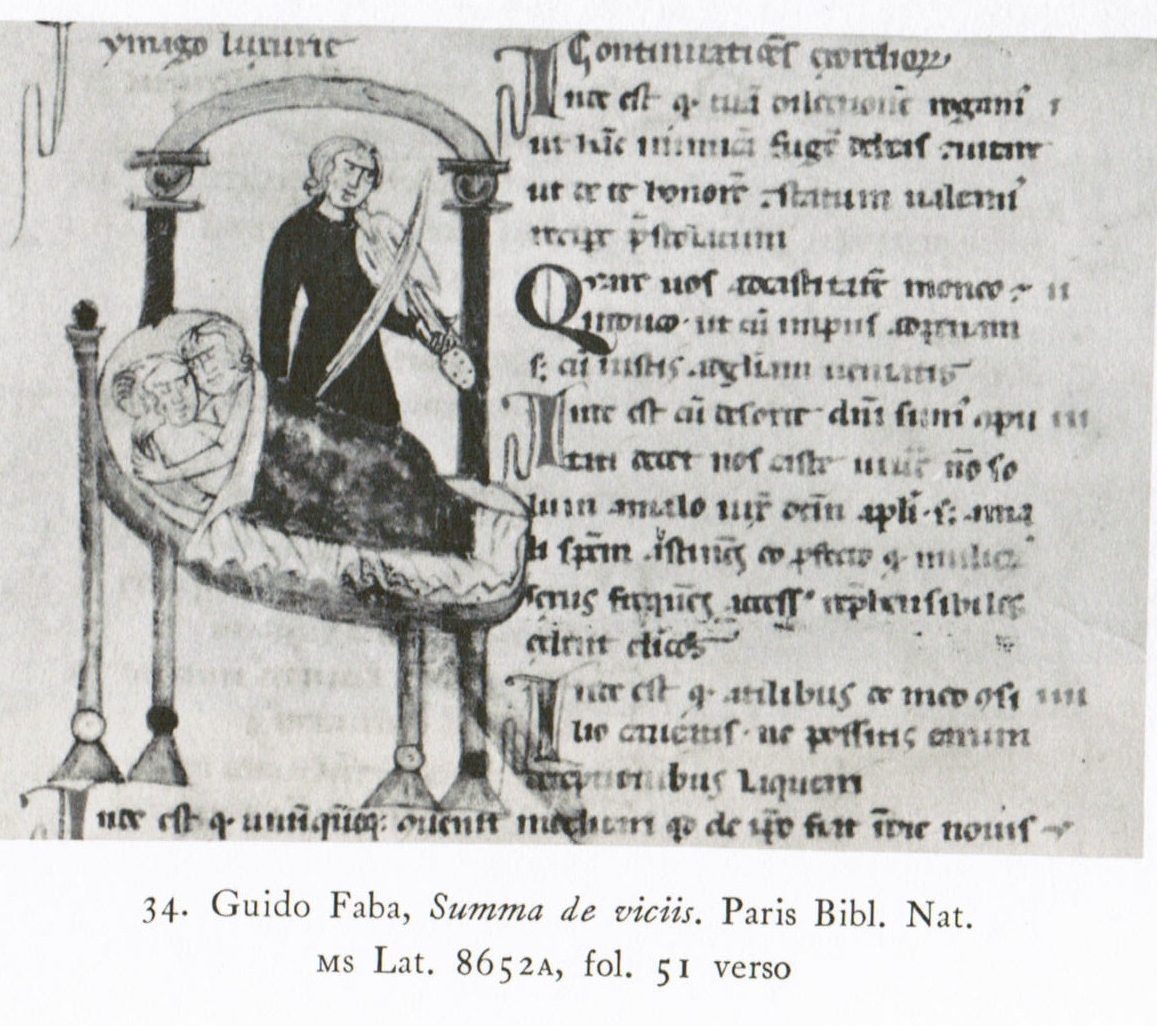The Passio of Love in Andreas…
Its Stages, and those of the Universal Pattern of Sin…
The Roman de la Rose…
Idleness and Lust…
Andreas’ admonition against the pursuit of carnal love is thus something that runs through the whole work, and is not confined to the last book, “The Rejection of Love”, which is usually mistakenly dismissed as a sort of pious palinode. In the first chapter of the first book, for example, Andreas gives his friend Walter anything but a positive prospectus. He warns him that lovers are in a constant state of agitation and fear: knowing their love is illicit, they fear it may at any time be revealed; they fear they may not be able to succeed in their suit (perhaps they’re ugly); or they worry that having gained their lady’s favour, they will lose it. The lover is in a state, in other words, exactly like that of the foolish worldling described by Boethius’ Lady Philosophy, whose earthly ambition and avarice have made him a slave to the fickle goddess Fortuna.
Andreas then formulates a definition of love that places it in a wider and instantly recognizable theological context. Love, he says, is “a certain inborn suffering (passio) that derives from the sight of and excessive meditation upon the beauty of the opposite sex.” The passio of love, he continues, originates from the “suggestion of sight”, grows with “excessive meditation” or “pleasurable thought”, and becomes entrenched through the “consent of the reason”.
In the Middle Ages, as we have just seen, this is how the development of any sin was typically described, as every act of sin was thought to follow the pattern established by the Original Sin of Adam in the garden of Eden. For Andreas, as for Chaucer’s Parson, the crucial stage in the formation of this passion is that of excessive contemplation or pleasurable thought, as he emphasizes when he continues: “This suffering does not arise from any action; only from the reflection of the mind upon what it sees does this suffering (passio) come.”
Then Andreas alludes to a famous biblical text, Matt. 5:28, from Christ’s Sermon on the Mount: “For when a man sees some woman shaped according to his taste, he begins to lust after her in his heart; then the more he thinks about her, the more he burns, until he proceeds to a fuller meditation.” He begins, continues Andreas, to “differentiate her limbs,…to pry into the secrets of her body, and he desires to put each part of it to its fullest use”. Now the lover, having committed adultery in his heart (as the biblical text and former President Carter have put it), is ready to commit the sin “in deed”: “Then after he has come to this complete meditation, the lover cannot hold the reins, but he proceeds at once to action.”
Bearing this background in mind, we are now in a position to understand the passio that afflicts the poet-narrator when he falls in love with his rose bud in the Roman de la Rose.
Begun ca. 1237 by Guillaume de Lorris, and continued ca. 1277 by Jean de Meun, the Roman is by genre an allegorical dream vision; thus, in the very first lines the speaker anatomizes the various types of dreams as they had been conventionally enumerated since late antiquity, while being careful to invoke the authority of Macrobius’ celebrated discussion of the subject at the beginning of his commentary on the Dream of Scipio:
Many a man holds dreams to be but lies,
All fabulous; but there have been some dreams
No whit deceptive, as was later found.
Well might one cite Macrobius, who wrote
The story of the Dream of Scipio,
And was assured that dreams are ofttimes true…
Now, as for me, I have full confidence
That visions are significant to man
Of good and evil…
The speaker thus makes it clear that the dream he is about to narrate has a moral signification, and that—as is hardly unusual for medieval literature—his poem is going to be didactic.
He calls his dream “The Romance of the Rose”, and says that “it enfolds/Within its compass all the Art of Love”. It will be another “manual of instruction”, that is, on the proper conduct of the lover, after the manner of Ovid’s Art of Love and Andreas Capellanus’ De Amore.
Like Chaucer’s Canterbury Tales, the action of the Roman begins in spring, when the dream is said to have occurred, specifically
In that month [May] amorous, that time of joy,
When all things living seem to take delight,
When one sees leafless neither bush nor hedge,
But each new raiment dons, when forest trees
Achieve fresh verdure, though they dry have been
While winter yet endured, when prideful Earth,
Forgetting all her winter poverty
Now that again she bathes herself in dew,
Exults to have a new-spun, gorgeous dress…
The birds, long silent while the cold remained…
Are glad in May because of skies serene,
And they perforce express their joyful hearts
By utterance of fitting minstrelsy.
Then nightingales contend to fill the air
With sound of melody, and then the lark
And popinjay with songs amuse themselves.
Here, again, the bird-song and universal rebirth of nature in the spring induce thoughts, not of the music of the spheres, nor the resurrection of the spirit in imitation of the vernal death and rebirth of Christ on the Cross, nor of holy pilgrimages, as in Chaucer, but of more earthly pastimes:
The young folk then their whole attention give
To suit the season fair and sweet with love…
In this season of love, the speaker dreams that he has been awakened by the morning chorus of the birds and wanders across town to hear more of their music (and thus “welcome the new year”). On his journey, he comes to a river, and on its bank a walled garden. Painted on the walls, he sees the images of a number of personified abstractions, each clearly identified in an inscription, including: Hate, Hypocrisy, and the deadly sins Covetousness, Avarice, and Envy, the conventional iconography of each of which he describes in detail. Notwithstanding the rather ominous implications of these allegorical emblems, hearing the marvelous sounds of the birds singing their “courteous, pleasing songs of love” within, and “most powerfully stirred by all their tunes”, the dreamer proceeds eagerly to the garden gate and knocks.
The gate is opened by the porteress of the garden, a beautiful, yellow-haired, tender-fleshed maiden named Oiseuse, who carries a wreath of roses, a comb, and a mirror. As the dreamer comments with envious approval, “When she was combed, adorned, and well arrayed,/Her daily task was done.”
The name Oiseuse means accidia in Latin (idleness or sloth en anglais), and indeed the “character” who is the gate-keeper of the garden is no character at all, but another allegorical abstraction. She is the personification of one of the Seven Deadly Sins, and the comb and mirror she carries are her traditional iconographical attributes in ecclesiastical sculpture, stained glass, manuscript illuminations, theological manuals on the Seven Sins, and literary descriptions of which there are literally thousands of examples.
Not surprisingly, the mirror of self-love and pride in her own physical beauty, and the roses that fade of a season, are attributes that Idleness shares with another of the Seven Sins, Luxuria, or Lust; and indeed (as mentioned in a previous essay), the former is understood to be one of the necessary conditions of the latter: “Remove idleness”, as Ovid famously wrote in his Remedies for Love, “and you destroy the arrows of Cupid”.
This became a favourite quotation in medieval and Renaissance texts, and the idea that idleness leads to lust was another Christian commonplace. In the popular thirteenth-century satire Architrenius,for example, idleness is called “the nurse of Venus”. The fourteenth-century English preacher Robert Holcot says idleness is the “first cause” of lechery. And with Ovid’s text in mind, Guido Faba writes in his treatise on the virtues and vices:
He who wishes to remove lust should strive to remove idleness. Which is why you are exhorted by all means to heed duty and labour diligently, lest the seductress Venus shower you with her deadly arrows, since while the enjoyment of lust is brief, the penalty is eternal.
Oiseuse confirms the dreamer’s impression of her, when she introduces herself formally:
All my companions call me Idleness,
A woman rich and powerful am I.
Especially I’m blessed in one respect:
I have no care except to tress and comb
My hair, amuse myself, and take mine ease.
There can be no mistaking, then, the identify of the lady who stands at the gate to the garden; and any rational dreamer at this point, having seen the images of the Sins and other misfortunes depicted on the wall of the garden, and now having met one of them in the “flesh”, would have done everything in his power to rouse himself from sleep.


